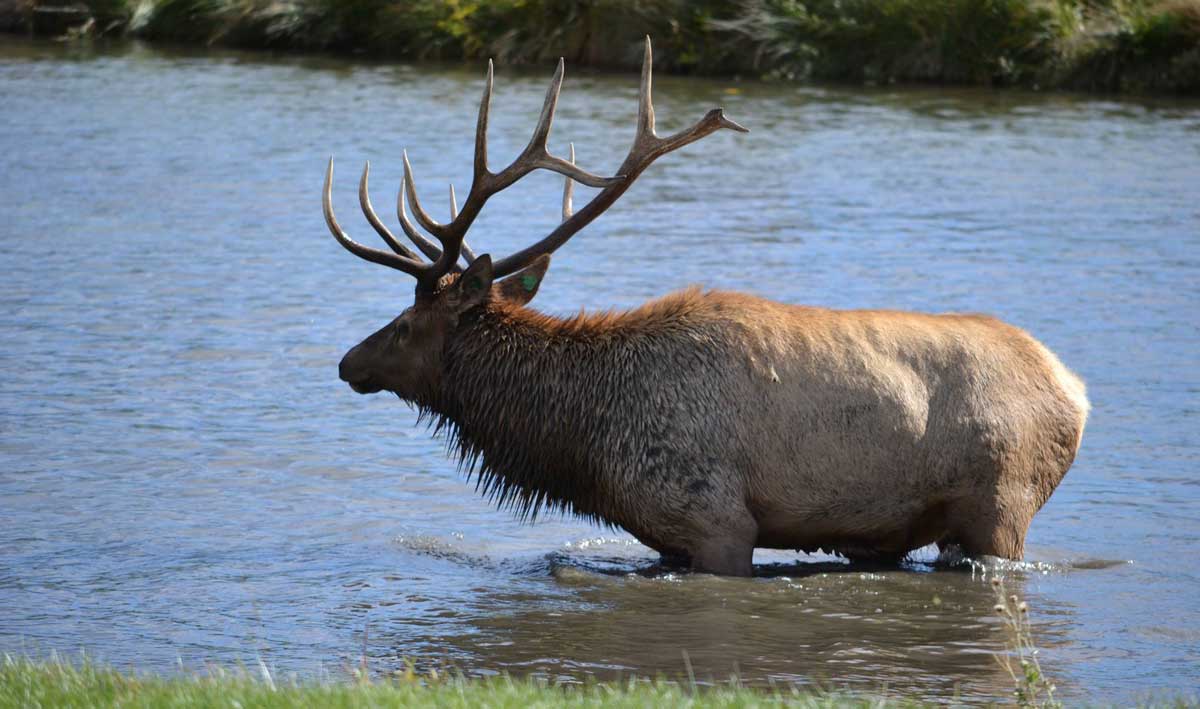All cervids are excellent swimmers. Hollow hair and rich fat help make elk buoyant and insulate them from the danger of hypothermia in frigid waters.
Yearly migration routes—particularly in mountainous areas—often require elk to cross creeks and rivers swollen from spring run-off. Calves only a few days old can navigate substantial rivers but may require days of coaxing before they’ll take the plunge. Reintroduced elk on Afognak Island in Alaska have been known to swim three miles to nearby Kodiak Island.
While being pursued by wolves, elk may retreat into waterways that largely protect them from predation. Native Americans, such as the Salish of Puget Sound, long took advantage of this tendency, driving elk into the sea with dogs and fire before clubbing them from canoes.
An elk’s natural endurance—from generations of fleeing predators in open country—allows it to power through long distances or rough waters. Of course, sometimes elk simply take a refreshing dip to cool off in the summer.
Photo c/o Faith Marlin
Elk NetworkAre Elk Good Swimmers?
Conservation | March 30, 2018

Latest Content
Restoring Elk Country – Tule Elk
The only place in the world to find tule elk is in central California. Once on the verge of outright extinction as a subspecies, the [...]
Work Begins on Arizona Wildlife Overpass
Below is a Facebook post from the Arizona Department of Transportation. The Rocky Mountain Elk Foundation previously supplied funding for vegetation and fencing projects to [...]
Study: One Wolf Can Cause $162,000 in Losses for Cattle Ranchers
Below is a news release from the University of California, Davis. Motion-activated field cameras, GPS collars, wolf scat analysis and cattle tail hair samples are [...]